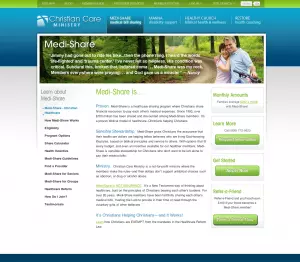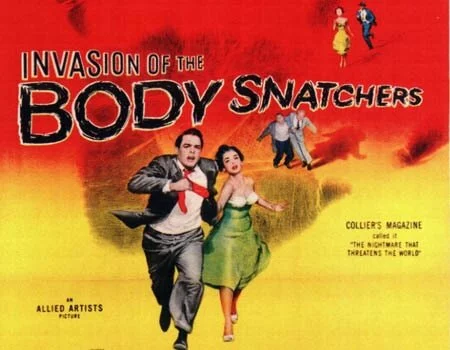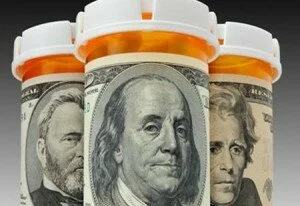
Read More on How to Get Christian Health Insurance Coverage for You and Your Family!
Acts 4:34 states, “For there was not a needy person among them, for all who were owners of land or houses would sell them and bring the proceeds of the sales.” [1] This was an extraordinary, spontaneous out-pouring of love on the part of the new believers in the early church. Wouldn’t it be wonderful to see that happen today?
Christians are concerned about healthcare costs and the implications of the Affordable Health Care Act passed by the Obama administration. Many have wondered how to get Christian health insurance coverage. Medi-share is a company that provides health and disability coverage that is based on biblical principles.
How to Get Christian Health Insurance Coverage
Medi-share is a cost sharing program, which is unlike traditional insurance products. In fact, it is not health insurance and is not required to be licensed or regulated by any insurance company.
How Does Medi-share Work?
Each member contributes a monthly share. This amount varies by the number of people in the household and the age of the oldest member. The money is kept in an account with America’s Christian Credit Union. When a member has an eligible expense, the money is then pooled from this account to cover it.
Disability Coverage
Medi-share also offers a disability program called Manna. It works on the same principle as the health cost sharing program but provides twelve months of income replacement. Manna will cover up to 80 percent of income for an eligible disability claim.
How to Get Christian Health Insurance Coverage for Seniors
Senior Assist is cost sharing for people over the age of 65. This program covers expenses not covered by Medicare Parts A and B, such as hospitalization, skilled nursing, co-payments and deductibles. The cost is very competitive compared to other Medicare supplement programs and may cover eligible pre-existing conditions.
Cost Sharing Programs for Groups
Church and Christian organizations often struggle to find affordable healthcare coverage for their employees. Medi-share provides cost sharing programs that will not strain the budget of your organization. The program is similar to that of individual plans; however, members receive a discount on the membership fee. Monthly shares and eligible expenses are handled through a group administrator.
Health and Wellness Program
Medi-share offers a unique program that focuses on physical and spiritual well-being. Members are encouraged to pray and support each other. The Restore program offers personalized wellness coaching to help members achieve personal health goals. Members learn about healthy eating, exercise and weight loss through a coach who listens and prays for them.
Medi-share and the Affordable Health Care Act
The Affordable Health Care Act includes a mandate that requires most Americans to purchase health insurance by 2014 or pay a penalty. By enrolling in Medi-share, members are exempt from having to purchase government insurance. This is not only cost effective, but it also ensures that Christians will not be forced to provide financial support for practices that are not compatible with their values.
What is Christian Care Ministry?
Christian Care Ministry is a non-profit organization which oversees Medi-share and facilitates the cost sharing program. Christian Care does not pay expenses directly to health care providers; they simply oversee the processing of eligible expenses. Providers submit their bills directly to Christian Care to receive payment through cost sharing.

Click the “Apply Now” button to get started!

Click Here to Apply Today & Get $100 Gift Certificate!
Despite what most people may think, Medi-Share is not like an insurance policy. Health insurance is a policy that comes with a contractual agreement, entitling you to pay for your medical bills. On the other hand, Medi-Share revolves in the concept of members sharing their medical bills. This is done on a non-guaranteed basis. The concept also involves trusting God to supply during their times of need by means of the charitable gifts of other Christians. Medi-Share is a Christian health insurance alternative.
What Makes Medi-Share Exceptional?
Medi-Share has been working to provide its members the assistance they need through the concept of sharing and helping one another. There are four main factors that make Medi-Share exceptional.
- Medi-Share Has Been Tried and Tested. Medi-Share has been proven to work in over 19 years. The members of Medi-Share have been assisting one another by means of medical bill sharing. In fact, there are over $675 million that has been shared as well as discounted. This is considered as the Lord’s way of helping out His people care for each other while also providing a healthcare system that works.
- Sensible Concept. Medi-Share is also a sensible approach. It has several investment options that would fit the needs of those Christians who do not want to be alone when it comes to paying their medical expenses.
- Good Stewardship. The concept of Medi-Share is also perfect for those Christians who want to help out their fellow Christians who have the same lifestyle that they have, basing on the Biblical concepts as well as service to other people.
- Ministry. This is a nonprofit ministry where members create the rules based on Biblical concepts and teachings. Moreover, the ministry does not support choices that deviate from the Biblical concepts and teaching like drug and alcohol abuse as well as abortion.
Does Medi-Share Work?
Medi-Share is based on the concepts of Christians helping Christians. Moreover, this is also known as Christian Healthcare Sharing. This brings Christians from all walks of life together to share one another’s health care expenses and costs. This is a modern version of the principles noted in the book of Acts. There are several programs available and members can choose the best option that fits their needs and preferences as well as budget.
Every month, a member’s share is matched to another member’s eligible medical bills. The Christian Care Ministry is the one that aids in the sharing of the medical costs and expenses between the members. Moreover, each member may check online to determine who they are sharing with. This provides the opportunity for each member to pray and encourage the other people that they are sharing the costs with.
Medi-Share is More Than A Healthcare Concept
While many would think that this is simply a healthcare concept, Medi-Share goes beyond that. This is considered a community of people who believes in the same principle and lives with the same values in life. The members of such community pray for one another, and they are supported by an institution that provides health education as well as promotes Biblical living. Each member can experience the freedom as well as the blessing which comes from experiencing help from other people and from providing help to other people.
Options Available in Medi-Share
Medi-Share provides its member several options for individuals as well as families. In fact, they provide a plan that can fit to any budget. Under the Medi-Share 2.0, the members will determine their payment on a monthly basis basing on their Annual Household Portion or their AHP level. The concept behind AHP is the same with that of a deductible. Basically, the members will establish how much of their annual medical bills that they can afford before Medi-Share provides payment support. There are seven AHP levels. These are $500, $1250, $2500, $3750, $5000, $7500, and $10000. The rate of each monthly plan will be determined through the number of the people covered. Once the AHP is established, the members will then select the number of people that are covered. The age of the oldest person covered will also determine the monthly rate.
Senior Assist in Medi-Share
There is also a special plan intended for senior citizens known as Senior Assist. The purpose of the plan is to aid those people with Medicare parts A as well as B by means of covering the gaps on the Medical coverage. The plan applies for members 66 years old and above. This plan works the exact same way with that of a regular Medi-Share program where the other members will help cover the medical costs and expenses. However, the Senior Assist plan’s coverage is limited to several expenses like copayments, deductibles, stays in nursing facilities, hospitalization, and urgent care abroad.
Member’s Ways to Prove Their Faith
Medi-Share is a faith-based community of Christians coming together to assist one another cover the medical expenses. However, the enrollment to the community does come with a catch. The people who join this community should prove their faith through regularly attending the services as well as actively supporting the ministry. Moreover, the members need to complete a statement of their faith and they should also have a verifiable testimony regarding their relationship with God. The members are also required to believe in the Biblical doctrines, which view and treat the body as a pure entity. The members should not engage in any sexual activities outside of their Christian marriage. Lastly, the members should also not abuse tobacco, drugs, or alcohol.
Prescription medication bills can be crushing, especially without good insurance coverage. However, there is a best kept secret. Wondering How to Get Free Prescription Drugs or Low-Cost Prescription Medication? Believe it or not, it can be done. With a little savvy and research, you can actually prescriptions that cost you little or nothing.
With a strained economy, everyone is watching their budgets today. Whether you have first rate insurance, or no insurance at all, take advantage of the opportunities that are there for the taking when it comes to getting free or low-cost prescription drugs.
The first thing you need to realize is that it may take you some time to have access to savings. However, you have nothing to lose as you apply for programs that will allow you to purchase your prescriptions at a lower price, at times even qualifying for free medication.
The RX Assist Patient Assistance Program Center provides an excellent resource that is free for an online search. You’ll be able to find out what is offered for individuals with a low income. You can find out eligibility requirements, special programs offered for those with numerous prescriptions, and also learn about programs that are provided by the state. Finding out how to get the lowest price or even free medication can be very time-consuming and isn’t always easy. You still owe it to yourself to find out if you qualify. Above all, you need to ensure that you do not jeopardize your health by going without essential medication.
Clinical trials are another way to go when you are searching for medication at little or no cost. Clinicaltrials.gov can assist you in finding out if there is anything available in your area that applies to your condition. You’ll be under the superivision of hospital staff while you participate. Not only will you have access to medication for free, you will also be taking part in important research that could help others.
Don’t forget Medicare. This program is funded by the federal government and administered by each state. If you are over the age of 65, you need to inquire about Medicare. Find out all of the details and how this valuable program can assist you in all of your healthcare needs. From medication to doctor’s visits and hospital stays, you could be eligible for considerable assistance.
Another resourceful way on how to get low-cost prescription drugs is eDrugsearch.com can also help you in finding affordable medication. You’ll be able to freely compare drug prices from various, licensed Canadian pharmacies. Whether you need a generic prescription, or the name brand, this site is a gold mine of free valuable information. You’ll have access to verified online pharmacy and drug ratings and reviews. Combine your findings at eDrugsearch.com with any assistance programs you find to save the most on a tight budget.
About this Angie’s List Expert: Cary Byrd is the president and founder of eDrugSearch.com. Based in San Antonio, eDrugSearch.com is a free cost comparison engine that helps consumers get safe access to affordable medications and advocates licensed online pharmacies as a widely accepted alternative.
Medications are often cheap for people with insurance, but the average cost of prescription drugs without insurance can be expensive. Fortunately, it’s still possible to save on the cost of medicine in this situation. For example, assistance plans are available through certain pharmaceutical companies to cover part of the price of their prescription drugs. In addition, some retailers offer savings programs that let users buy generic drugs at discount prices far below the cost of name-brand versions.
Standard Pill Costs
Unfortunately, it’s difficult for consumers to calculate costs of prescription drugs for budget purposes. Because drugs vary in strength and prescriptions come in different sizes, prices vary considerably. Because generic drugs aren’t available at all pharmacies, patients can’t always expect to find the cheapest versions of medicines they need. Lipitor is one example of this. For the 10 mg version of the drug, U.S. consumers can expect to pay anywhere from $0.43 to $1.99 for a single pill. By comparison, the 80 mg pill of the same medication costs between $0.72 and $3.36 for a pill, which makes it considerably cheaper when patients have the option to purchase 60 or 90 days worth of the drug.
Prohibitive Pricing
The average cost of prescription drugs without insurance is too high for many patients. Lyrica is one example with its average price of $3 per pill. Meanwhile, the acid reflux drug Nexium can cost anywhere from $0.61 up to $3.64 for the 40 mg pills. Consumers can expect to see significantly higher prices for name-brand versions of drugs. In cases of inhaled or injected medications, prices are often even higher. Humira, for instance, can cost as much as $1,890 for just two syringes without insurance to cover it.
Big-Box Retailers: Target and Walmart
Patients can find literally hundreds of generic drugs for as little as $4 per month at these stores, with 90-day supplies going for just $10. Unfortunately, these prices cover only a limited selection of drugs, making the average cost of prescription drugs without insurance too high for many consumers. For example, new drugs without generic versions aren’t sold at these low prices. However, this discount pricing often does cover drugs used for common health problems such as high blood pressure, diabetes and high cholesterol. Both Walmart and Target offer similar pricing on these medications. Patients can usually find these drugs for low prices by shopping around.
How Patients Can Save Money
The average cost of prescription drugs without insurance can be high, but patients can save quite a bit of money if they know how. Opting for the generic brand of a drug, if available, is a sure way to save money every time. In some cases, drug manufacturers list discount plans, coupons and other forms of assistance on their websites. Physicians are also occasionally valuable sources of both samples and information about finding discount drugs and free trials. However, eDrugSearch.com is definitely the best way to compare prices between different sources and ultimately get safe access to affordable medications. The average consumer who uses eDrugSearch.com to compare their prices from licensed online pharmacies will save 72% off standard U.S. retail prices.
About this Angie’s List Expert: Cary Byrd is the president and founder of eDrugSearch.com. Based in San Antonio, eDrugSearch.com is a free cost comparison engine that helps consumers get safe access to affordable medications and advocates licensed online pharmacies as a widely accepted alternative.
Join our FREE online health community and prescription drug forum today for encouragement, friendship, and support. After you register you can easily find others who share similar health and prescription drug experiences, just like you.
Join Today, It’s 100% FREE! Go to: /signup

Individuals with pre-existing conditions who have been uninsured for six months may now find it easier to obtain coverage through the Pre-Existing Condition Insurance Plan (PCIP). PCIP was created by the Affordable Care Act to provide interim coverage until the Health Insurance Exchanges are up and running in 2014. Twenty-seven states administer their own PCIP. PCIP is administered by the Department of Health and Human Services (HHS) in the other 23 states and in the District of Columbia.
HHS announced on May 31, 2011, that premiums would be reduced by as much as 40% in 18 of the 23 states in which the federal government administers PCIP.
Furthermore, starting this July, applicants in the states where PCIP is administered by HHS will no longer have to establish that they have been turned down for health insurance coverage by an insurance company. They will only have to provide a letter from a doctor, physician assistant, or nurse practitioner verifying that they have or have had a medical condition, disability or illness that qualifies them for PCIP. The letter must be dated within 12 months of the application.
Coverage under PCIP is available to individuals who are citizens or who are living in the United States legally, who have pre-existing conditions, and who have been uninsured for at least the last 6 months. Eligibility is not based on income. PCIP covers hospital care, primary and specialty care, and prescription drugs, even for pre-existing conditions coverage.
Click on the link below for more information on applying to PCIP: http://www.healthcare.gov/law/provisions/preexisting/federal/index.html
 The pharmaceutical industry, through its lobbying group PhRMA, has promised to cut drug prices for certain Medicare Part D recipients and others by $80 billion over the next decade. In return, the Obama Administration has promised not to reform the pharmaceutical industry — no new regulations, no Medicare negotiation for lower drug prices, no drug reimportation from Canada.
The pharmaceutical industry, through its lobbying group PhRMA, has promised to cut drug prices for certain Medicare Part D recipients and others by $80 billion over the next decade. In return, the Obama Administration has promised not to reform the pharmaceutical industry — no new regulations, no Medicare negotiation for lower drug prices, no drug reimportation from Canada.
Sound like a good deal to you?
Well, $80 billion sure sounds like a lot of money. But here are some things to think about –
- President Obama trumpeted the deal without indicating how or whether these savings could be guaranteed; the specific terms are not included in any of the bills in Congress.
- Some analysts estimate that only $30 billion of the $80 billion can be guaranteed.
- Since U.S. prescription drug prices have been rising at three times the rate of inflation, it is unclear whether the promised price cuts will actually reduce prices or simply slow their growth temporarily.
- In accepting PhRMA’s demand for no price negotiations, the government is forgoing what could be as much as $220 billion in savings over the same period, according to a report by the Institute for America’s Future, which matched drug price savings the government negotiated for the Veteran’s Administration.
- Americans spend $200 billion per year on prescription drugs — and rising (even with the $80 billion “discount”).
- We pay more for prescription drugs than any country in the world. The Congressional Budget Office found that drug prices in other countries average 35 to 55 percent below the prices in the U.S. But now that Obama has buckled on Canadian drug reimportation, Americans cannot take advantage of these bargains (at least according to the letter of the law).
- The pharmaceutical industry spends $100 million a year — $1 billion a decade — just on lobbying members of Congress.
- Even in the midst of a recession, Johnson & Johnson CEO William Weldon was paid $29,127,432 in 2008; Abbott Labs CEO Miles White made $28,253,387 and Merck’s Richard Clark made $25,073,555.
- Overall, Americans pay twice as much (or more) per capita on healthcare than all other Western countries, which in many cases have better health outcomes than the United States.
How’s that $80 billion sound now?
Sources: Nader, Redmond

I’ve guess I’ve finally come back to my senses.
After years of being cynical about our political system’s capability of doing anything but accumulating debt, I somehow thought Obama could make a difference. I thought, among other things, that meaningful healthcare reform was finally on its way.
But the system itself is more powerful than Obama … far more powerful.
I didn’t think it was possible that Congress could create a healthcare reform bill that I would oppose. I figured that any change would be a step in the right direction.
But then the White House caved in to Big Pharma on issues like Medicare price negotiations and Canadian drug reimportation. Big Pharma was basically assured that it could continue to charge monopoly prices for brand-name drugs without restraint.
That completely knocks out the promise of controlling skyrocketing prescription drug costs — which should have been a key pillar of healthcare reform.
Obama did this, clearly, as a political calculation. He did not think he could get a bill passed if he had both Big Pharma and Big Insurance against him. So he picked his poison — and Big Pharma agreed to support reform.
As a result, “healthcare reform” has become “health insurance reform.” The health insurance industry, like Big Pharma, is not a sterling example of the free market economy at work. That’s why you don’t see real price competition, and why health insurance companies focus instead on increasing their margins by not paying off claims. It’s also why a public option is necessary for there to be any chance of real insurance reform.
I don’t think Obama’s going to get the public option, either.
I think we’re going to get a bill passed that encourages/forces Americans to sign up for private insurance, and that continues to subsidize drug company profits. It will end up enriching both Big Pharma and Big Insurance. And it will cost us billions or trillions of dollars that we don’t have and must borrow from China.
Borrow and spend. That’s been the core “problem-solving” approach of both Democrats and Republicans over the past 30 years (with the exception of Bill Clinton, the only president to have balanced the budget during this period.) In fact, Obama’s “problem-solving” approach on healthcare is eerily similar to George Bush’s approach on Medicare Part D.
As former Secretary of Labor Robert Reich explains:
The White House confirmed it has promised Big Pharma that any healthcare legislation will bar the government from using its huge purchasing power to negotiate lower drug prices. That’s basically the same deal George W. Bush struck in getting the Medicare drug benefit, and it’s proven a bonanza for the drug industry. A continuation will be an even larger bonanza, given all the Boomers who will be enrolling in Medicare over the next decade. And it will be a gold mine if the deal extends to Medicaid, which will be expanded under most versions of the healthcare bills now emerging from Congress, and to any public option that might be included. (We don’t know how far the deal extends beyond Medicare because its details haven’t been made public.)
Let me remind you: Any bonanza for the drug industry means higher health-care costs for the rest of us, which is one reason why critics of the emerging healthcare plans, including the Congressional Budget Office, are so worried about their failure to adequately stem future healthcare costs. To be sure, as part of its deal with the White House, Big Pharma apparently has promised to cut future drug costs by $80 billion. But neither the industry nor the White House nor any congressional committee has announced exactly where the $80 billion in savings will show up nor how this portion of the deal will be enforced. In any event, you can bet that the bonanza Big Pharma will reap far exceeds $80 billion. Otherwise, why would it have agreed?
Exactly.
Isn’t it odd, in a day when the political parties are supposedly so different, and people are shouting about non-existent “death panels” at town hall meetings, that the underlying reality is that the political parties are actually so similar? That the Democrats’ “solution” for healthcare may simply be an expanded version of the Republicans’ “solution” for seniors who can’t afford their prescription drugs — Medicare Part D?
Democrats and Republicans enjoy the perks of power. But they ultimately don’t run Washington. They both must answer to the same “paymasters,” as consumer advocate Ralph Nader calls them. Corporate interests.
Show me a grassroots movement that takes on corporate power, and I’ll show you a third political party. You won’t find it within the current two-party system. When we next “water the tree of liberty with the blood of tyrants,” as Jefferson put it, those tyrants will be giant multinational corporations, not their trembling lackeys who hold political office.
Image source
 We would still like healthcare reform legislation to succeed this year — but we are not nearly as enthusiastic about it as we were just a few short months ago.
We would still like healthcare reform legislation to succeed this year — but we are not nearly as enthusiastic about it as we were just a few short months ago.
For starters, the Obama Administration isn’t calling it “healthcare reform” anymore. Now it’s “health insurance reform.”
Reformers have lowered their sights. They aren’t trying to fix Big Pharma’s stranglehold on the American consumer anymore. All they are trying to do now is to offer a public alternative to Big Insurance. And even this small measure of reform may not become law.
If it doesn’t, and so-called “universal health care” passes, it will simply be another handout to corporations, paid for by taxpayers, just as Medicare Part D was. The government will simply pay to have everyone “covered,” but won’t fix the underlying problems that make America’s healthcare system so overpriced and inefficient.
What a shame.
I haven’t given up hope that the public option will succeed. But I have given up all hope that the bill will include meaningful improvements in prescription drug prices.
As Ralph Nader explains:
Obama invites (drug companies) to the White House, where they presumably pledged to give up nearly $300 billion dollars over ten years without any specifics about how this complex assurance can be policed.
No matter, in return Obama and his aides agreed not to press Congress to authorize the federal government to negotiate drug prices with the drug industry. Don’t worry: the taxpayers will pay the bill.
At a meeting on July 7 at the White House between drug company executives, Obama’s chief of staff, Rahm Emanuel, and Senate Finance Chairman Max Baucus (D-MT), the industry, according to The New York Times, was promised that the final legislative package would not allow the reimportation of cheaper medicines from Canada or other countries even if they meet our drug safety standards.
Do you see anything odd about the pharmaceutical industry promising “X dollars over X years” in lower prices to consumers? Does that sound like a free market process to you?
In other words, if I had a business selling apples, and I sold them for 25 cents each, you would assume that this price would be based on what the market would bear. That is, if I sold them for 30 cents, I would not sell them all and some of them would rot. But if I sold them for 20 cents, I would sell them all too fast and not make as much money as I could have. That’s the market setting the price.
Big Pharma doesn’t operate by such rules. It has a friend — the U.S. government — that decides how much money it can make on the drugs it develops.
The government decides this by giving drug companies patents, and then extending these patents again and again, so that they can have a monopoly on the drugs they sell.
If I’m the only one in the world who’s allowed to sell apples, I can probably get a lot more than 25 cents an apple, can’t I?
In fact, I can start marketing apples as a sweet, juicy alternative to Russian caviar if I want to. I can sell them for $100 each if I want, right?
And what would be even better is if your doctor informed you that, for your health, you had to have an apple every day. Then you would have to find a way to get one, whether you could afford it or not, wouldn’t you?
Gee, it’s great to be in the apple-selling business, isn’t it?
So here I am, selling my apples at an outrageous profit, buying G4s to fly me around, spending billions of dollars on TV ads to ensure that consumers “ask their doctors” whether they need to eat more apples, when all of a sudden President Obama calls.
“Hey,” he says, “what would you say about selling your apples for $95 instead of $100 for a few years? And maybe selling them for $50 to seniors in the Medicare Part D doughnut hole? That way we could say that you have contributed $X billion in cost savings to our healthcare reform bill.”
“Hmm,” I think. “Why not? It’s good PR — and how funny that people will think they’re actually getting a bargain by paying $95 for an apple.”
If you want to pay $95 for an apple, you can wait for the benefits of Obamacare. Otherwise, you should seek the immediate benefits of licensed Canadian pharmacies.

Did you ever see “Invasion of the Body Snatchers”? Well, I’d like to report the snatching of two bodies — those of Harry and Louise. As our friend John Mack reports:
Remember those Health Insurance Association of America “Harry and Louise” TV ads that were instrumental in scuttling Hillary Clinton’s health reform efforts in 1993? Well, Harry and Louise are back! This time, however, they support health reform. “A little more cooperation, a little less politics, and we can get the job done this time,” says Louise as a halo swirls around her head and eventually forms the URL: HarryandLouise.org. Seems to me we could have gotten the job done in 1993 with a little less Harry and Louise!
Here’s the ad that started running this weekend:
Ironic, huh?
But the real irony here is not that proponents of healthcare reform are using the same characters who effectively opposed it in 1993. It’s that while the 1993 ads were predictably funded by the Big Insurance lobby, the new ads are funded by Big Insurance’s longtime partner in crime — the Big Pharma lobby, PhRMA.
So, whose body has actually been snatched here? Harry’s? Louise’s? Or PhRMA’s?
Alas, PhRMA hasn’t turned over a new leaf and suddenly become a populist organization committed to ensuring healthcare justice for all. The fact is, because the Obama Administration knows the president’s reelection probably depends on swift passage of healthcare reform, it has given away the farm to corporate interests — including giving Big Pharma everything it wants.
If anybody has turned into a pod person, in fact, it’s Obama.
What does it say about corporate power in the United States when even a president whose party has 60 seats in the Senate and a huge majority in the House can’t oppose it?
When all is said and done, will Obama’s healthcare reform legislation be much different than a bigger, more bloated version of President Bush’s Medicare Part D boondoggle?
Just cross your fingers, close your eyes, and keep telling yourself, “It’s only a movie. It’s only a movie.”
-
Search Blog Posts
-
-
Trending Content
-

-
Blogroll
- Bullet Wisdom
- Christian Social Network
- DrugWonks.com
- Eye on FDA
- GoozNews
- Health 2.0
- In the Pipeline
- Jesus Christ Our King
- Kevin, M.D.
- Pharm Aid
- Pharma Marketing
- PharmaGossip
- Pharmalot
- San Antonio Asphalt
- San Antonio Life Insurance
- San Antonio Pressure Washing
- The Angry Pharmacist
- The Health Care Blog
- The Peter Rost Blog
- World Vision
-
Tags
big pharma Canadian drugs canadian pharmacies canadian pharmacy consumer reports craig newmark divine healing Drug costs drug prices Drug reimportation eDrugSearch.com FDA Fosamax Generic drugs healing scriptures Health 2.0 healthcare reform Hypertension Jehova Rophe Jesus Christ Lipitor Metformin miracles nabp online pharmacy dictionary online prescriptions osteoporosis peter rost Pharmacies pharmacists pharmacychecker pharmacy spam phrma Prescription drugs prescription medication Proverbs 3:5-8 reimportation relenza Roche saving money SSRI swine flu Tamiflu The Great Physician The Lord our Healer -
Archives
- June 2013
- May 2013
- April 2013
- March 2013
- February 2013
- January 2013
- August 2012
- July 2012
- June 2012
- April 2012
- March 2012
- February 2012
- January 2012
- November 2011
- June 2011
- August 2010
- July 2010
- June 2010
- May 2010
- April 2010
- March 2010
- February 2010
- January 2010
- November 2009
- October 2009
- September 2009
- August 2009
- July 2009
- June 2009
- May 2009
- April 2009
- March 2009
- February 2009
- January 2009
- December 2008
- November 2008
- October 2008
- September 2008
- August 2008
- July 2008
- June 2008
- May 2008
- April 2008
- March 2008
- February 2008
- January 2008
- December 2007
- November 2007
- October 2007
- September 2007
- August 2007
- July 2007
- June 2007
- May 2007
- April 2007
- March 2007
- February 2007
- January 2007
- December 2006
- November 2006
-
Recent Comments
- Ranee on What is the Difference Between Effexor and Cymbalta?
- bAnn805 on Crestor, Lipitor, or Zocor – Which statin is right for you?
- Anna Pham on Why is Medicine Cheaper in Canada?
- Anna Pham on How to Get the Cheapest Prescription Medications
- Anna Pham on How to Travel With Prescription Medication


